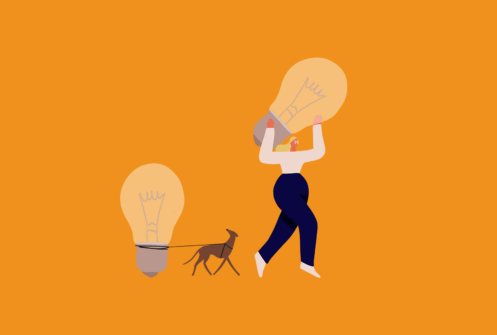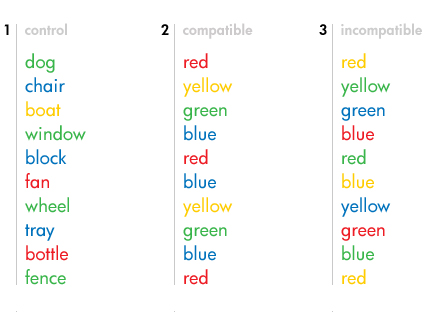

The human brain makes up just 2% of our bodyweight, but uses 20% of our energy.
This simple fact of physiology has significant impact on how we interact with the world, and it is particularly relevant for the field of media and advertising, especially with regards to how our brains process information. I got curious about the science behind these phenomena, so decided to dig a little deeper…
At a recent talk titled Why do people buy?, Dr. Sandra Murphy, Director of Neuroscience at global research institute Nielsen, explained how our brains are capable of taking in a lot more information than our conscious minds are aware of. When we see an object, we don’t just see its physical attributes, our brain also processes information about the meaning behind them.
An example that brings this to life is the Stroop test, developed by psychologist John Ridley Stroop in 1935, to illustrate the nature of automatic processing versus conscious visual control in the brain.
The test involves showing participants a series of words printed in different colours. Participants are asked to state the colour of a word, but not the ‘name’ of the word. For example, the word RED might be printed in yellow – and the participant must state the colour rather than the word.

Task: Do not read the words in the image. Instead, say the COLOUR of each word in each column, in a loud voice as fast as you can. [Source: What is Psychology?]
Most people tend to say the color of each word for columns 1 (control) and 2 (compatible) with little problem. Despite the clear instructions however, most people struggle to say the colour of each word in column 3 (incompatible). This difficulty occurs because when we look at the words in the test, we process the colour of each word as well as its meaning.
According to the biometric research firm iMotions, as habitual readers, we encounter and comprehend words on such a persistent basis that the reading occurs almost effortlessly, whereas declaration of a color requires more cognitive effort.
When the brain gets ‘tricked’ into making mistakes, such as during a Stroop test, this is because it is trying to save energy by taking shortcuts and making assumptions.
Advertisers have perfected the art of influencing our hard-working brains by intentionally designing shortcuts and brand associations, thus creating new and reinforcing existing memory networks. Creative content helps build mental availability by creating and strengthening long-term memory associations – i.e. the more we see brand X, the more likely we are to think of it when making purchasing decisions.
Emotions also play a key role in this process, because they help our brains filter out what’s important and relevant, building long-term memory networks.
Critics of the advertising industry are understandably skeptical of the powerful effect of these phenomena. So as conscientious advertisers and content creators, taking into account the link between memory, association, emotion and brand, how can we put this knowledge to use for good?
One way is for charities to invest more resources into the types of content that build awareness about their cause or brand – rather than purely prioritising fundraising campaigns, as is often the case. Brand awareness helps build brand loyalty, and is an essential step in building the long-term donor / audience relationships that are crucial to charities and corporate brands alike.
Interested in learning more about how psychology and behavioural science can influence our content? In 2018, our special insights series explored some of the fundamental ideas behind behavioural science and how these can help create better content, including the role of emotions in encouraging people to take action, and how behavioural ‘nudges’ can strengthen audience trust.
Author: Fiona Koch, Account Planner / Director at Raw London. Follow Fiona on Twitter @fijinsky